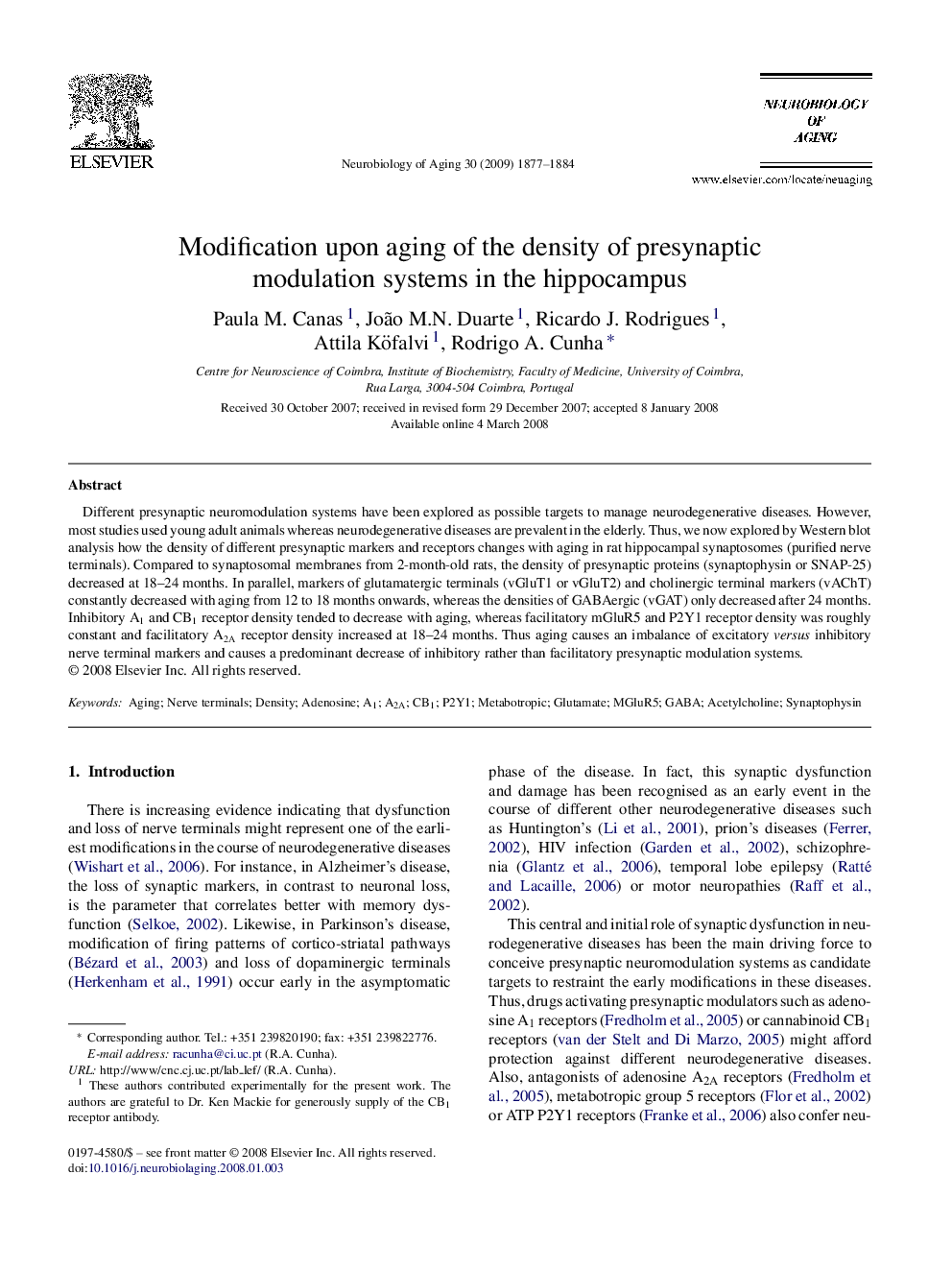| Article ID | Journal | Published Year | Pages | File Type |
|---|---|---|---|---|
| 329452 | Neurobiology of Aging | 2009 | 8 Pages |
Different presynaptic neuromodulation systems have been explored as possible targets to manage neurodegenerative diseases. However, most studies used young adult animals whereas neurodegenerative diseases are prevalent in the elderly. Thus, we now explored by Western blot analysis how the density of different presynaptic markers and receptors changes with aging in rat hippocampal synaptosomes (purified nerve terminals). Compared to synaptosomal membranes from 2-month-old rats, the density of presynaptic proteins (synaptophysin or SNAP-25) decreased at 18–24 months. In parallel, markers of glutamatergic terminals (vGluT1 or vGluT2) and cholinergic terminal markers (vAChT) constantly decreased with aging from 12 to 18 months onwards, whereas the densities of GABAergic (vGAT) only decreased after 24 months. Inhibitory A1 and CB1 receptor density tended to decrease with aging, whereas facilitatory mGluR5 and P2Y1 receptor density was roughly constant and facilitatory A2A receptor density increased at 18–24 months. Thus aging causes an imbalance of excitatory versus inhibitory nerve terminal markers and causes a predominant decrease of inhibitory rather than facilitatory presynaptic modulation systems.
